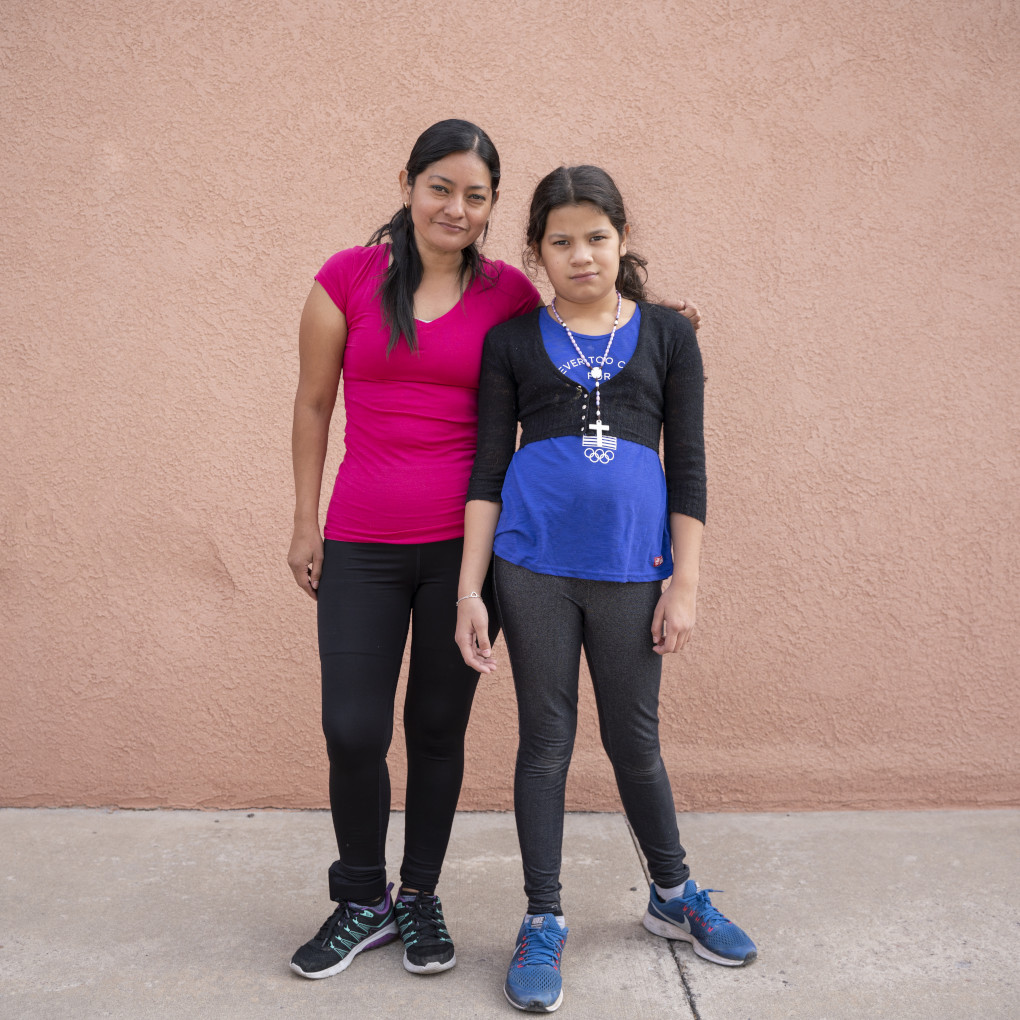Keila Bejarano, 34 and her daughter Lizzy, 11, from Tegucigalpa, the capital city of Honduras.
“I’m a single mother, over there you cant get work after you are 30 years-old,” she said, reaffirming the age discrimination many Hondurans describe. Seven years before, she broke off communication with the father of her daughter.
In addition to her economic difficulties she also wanted a way out from the difficult atmosphere she was raising her daughter in. In Honduras, crime is an all too common part of life, and she feared that it would inevitably happen to her and her daughter. “If they see you starting to do business they will leave you a note telling you to pay a tax,” she said, “And if you don’t pay it…”
She and her daughter left on January 8th, making their way through Guatemala and Mexico on buses and walking, paying for their journey with about 6,000 lempira ($250), which didn’t last long. On the 30th, they arrived in Ciudad Juarez where they stayed for a week, waiting to be able cross an international bridge and declare asylum.
“I want a good future for us,” she said, “And a good education for my daughter.”
Lizzy has had difficulties learning in school, and she hopes that she will be able to get the assistance she needs to overcome those such problems.
She departs to Dallas where a friend of hers has sponsored her release. There she would need to show up at her given court date to see if she can continue to stay.
Keila Bejarano, 34, y su hija Lizzy, 11, de Tegucigalpa, la capital de honduras.
“Soy madre soltera, y allá no puedes conseguir trabajo después de los 30 años,” dijo ella, reafirmando la discriminación de edad que muchos hondureños describen. Ella no ha podido tener comunicación con el padre de su hija, desde hace siete años.
En adición a las dificultades económicas, ella también quería una salida a la difícil atmosphera en la que su hija estaba creciendo. En Honduras, el crimen es muy común como parte de tu vida, y temía que inevitablemente llegaría a la vida de su hija y la de ella. “Si se dan cuenta que empiezas un negocio, te dejan una nota diciendo que tienes que pagar impuestos,” dijo ella, “Y si no pagas,…..”
Ella y su hija se fueron el 8 de enero, haciendo su camino a través de Guatemala y Mexico en autobus y caminando, pagando su jornada con más o menos 6,000 lempiras ($250), que no les alcanzó para mucho. Llegaron a Ciudad Juárez el 30, donde se quedaron por una semana, esperando cruzar el puente internacional para pedir asilo.
“Yo quiero un buen futuro para nosotros,” dijo ella, “Y una buena educación para mi hija,” Lizzy a tenido dificultades en aprendizaje en la escuela, y espera poder tener la ayuda que necesita para sobrellevar estos problemas.
Ella sale para Dallas donde una amiga de ella ha patrocinado su liberación. Despues tendria que presentarse a su cita de inmigracion para ver si puede continuar su estancia.
The Faces of Immigration Project is a 40 Day photo journal series used to highlight the stories of all Immigrants. The project is meant to shed light on some of the many reasons people have for immigrating to the U.S. Statements and stories have been edited for content, clarity, and brevity and may not reflect the entirety of an Immigrant’s reasons for immigrating to the United States.
By Paul Ratje

